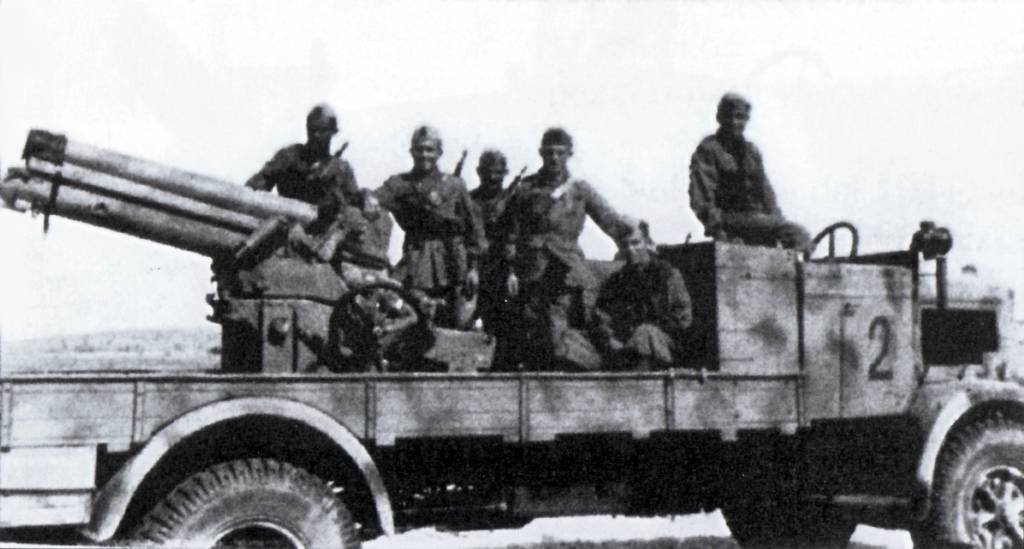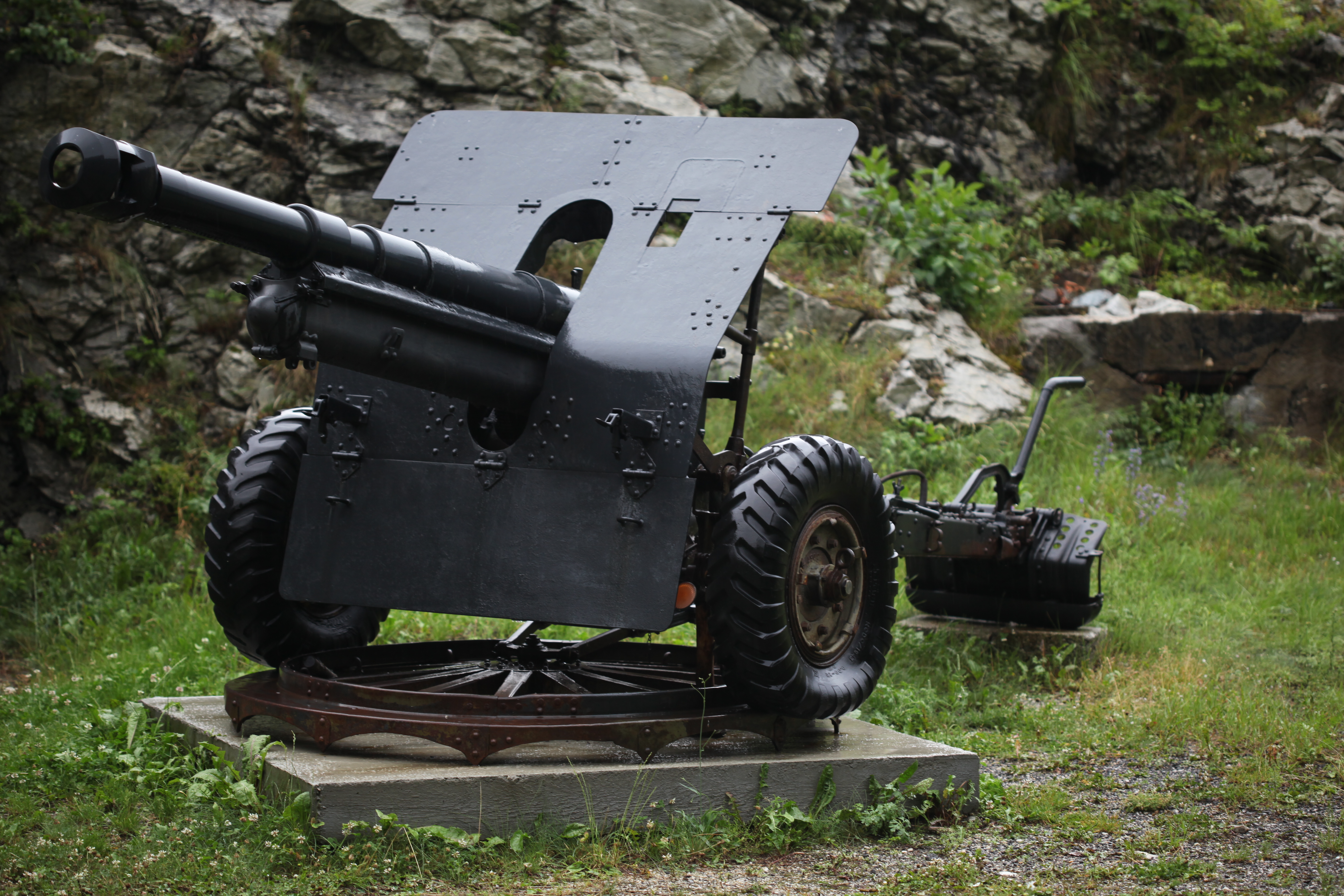10 Cm M. 14 Feldhaubitze on:
[Wikipedia]
[Google]
[Amazon]
The 10 cm M. 14 Feldhaubitze (Škoda houfnice vz 14) was a dual-purpose field and mountain gun used by
 During
During
 After World War II some of the howitzers were modified by the Military Arsenal of Naples for use as mountain artillery, with the denominations ''100/17 Mod. 14 mont.'' and ''100/17 Mod. 16 mont.'' In the second half of the fifties the howitzers were further modified for the service in the
After World War II some of the howitzers were modified by the Military Arsenal of Naples for use as mountain artillery, with the denominations ''100/17 Mod. 14 mont.'' and ''100/17 Mod. 16 mont.'' In the second half of the fifties the howitzers were further modified for the service in the
Austria-Hungary
Austria-Hungary, also referred to as the Austro-Hungarian Empire, the Dual Monarchy or the Habsburg Monarchy, was a multi-national constitutional monarchy in Central Europe#Before World War I, Central Europe between 1867 and 1918. A military ...
during World War I
World War I or the First World War (28 July 1914 – 11 November 1918), also known as the Great War, was a World war, global conflict between two coalitions: the Allies of World War I, Allies (or Entente) and the Central Powers. Fighting to ...
, with variations of the 14 and improved 14/19 used by several countries afterwards, especially Italy. It was a conventional design, although the first versions used an obsolescent wrought bronze barrel liner and a cast bronze jacket.http://www.landships.info/landships/artillery_articles/10cm_Feldhaubitze_m14.html Later versions used a standard steel barrel.https://www.passioncompassion1418.com/Canons/Eng_AfficheCanonGET.php?IdCanonAffiche=992
Royal Italian Army
 During
During World War I
World War I or the First World War (28 July 1914 – 11 November 1918), also known as the Great War, was a World war, global conflict between two coalitions: the Allies of World War I, Allies (or Entente) and the Central Powers. Fighting to ...
the Royal Italian Army
The Royal Italian Army () (RE) was the land force of the Kingdom of Italy, established with the proclamation of the Kingdom of Italy. During the 19th century Italy started to unify into one country, and in 1861 Manfredo Fanti signed a decree c ...
had captured 1,222 10 cm Mod. 14/16 howitzers from the Austro-Hungarian Army
The Austro-Hungarian Army, also known as the Imperial and Royal Army,; was the principal ground force of Austria-Hungary from 1867 to 1918. It consisted of three organisations: the Common Army (, recruited from all parts of Austria-Hungary), ...
. A further 1,472 were given to Italy as war reparations. In Italian service the guns were designated ''Obice da 100/17 Mod. 14'' and '' Obice da 100/17 Mod. 16''. The Royal Army Arsenal in Turin
Turin ( , ; ; , then ) is a city and an important business and cultural centre in northern Italy. It is the capital city of Piedmont and of the Metropolitan City of Turin, and was the first Italian capital from 1861 to 1865. The city is main ...
developed a new series of ammunition for the howitzers which were introduced in 1932 and included chemical warfare grenades.
The 100/17 was used in the Second Italo-Ethiopian War
The Second Italo-Ethiopian War, also referred to as the Second Italo-Abyssinian War, was a war of aggression waged by Fascist Italy, Italy against Ethiopian Empire, Ethiopia, which lasted from October 1935 to February 1937. In Ethiopia it is oft ...
and the Spanish Civil War
The Spanish Civil War () was a military conflict fought from 1936 to 1939 between the Republican faction (Spanish Civil War), Republicans and the Nationalist faction (Spanish Civil War), Nationalists. Republicans were loyal to the Left-wing p ...
.https://www.enricofinazzer.it/PDF/2019_Notiziario%20Modellistico_L%27obice_da_100_17_mod_14_e_mod_16.pdf
At the outbreak of World War II the Royal Army and the Guardia alla Frontiera were fielding 1,325 Mod. 14 in the original Austro-Hungarian configuration, 199 of the upgraded models which had their wooden wheels replaced with tires, and 181 Mod. 16s. During the North African Campaign
The North African campaign of World War II took place in North Africa from 10 June 1940 to 13 May 1943, fought between the Allies and the Axis Powers. It included campaigns in the Libyan and Egyptian deserts (Western Desert campaign, Desert Wa ...
Italian forces mounted the 100/17 Mod. 14 onto Lancia 3Ro
The Lancia Ro, Lancia Ro-Ro and Lancia 3Ro were 4x2 heavy trucks built by Italian manufacturer Lancia from the 1930s through the 1940s for military and civilian use. The 2-cylinder diesel Ro was produced from 1933 to 1939, the 3-cylinder diesel ...
heavy trucks and employed the gun as a mobile anti-tank/infantry support cannon. The 100/17 also served in Italian East Africa
Italian East Africa (, A.O.I.) was a short-lived colonial possession of Fascist Italy from 1936 to 1941 in the Horn of Africa. It was established following the Second Italo-Ethiopian War, which led to the military occupation of the Ethiopian ...
and the Russian Front.
Italian Army
 After World War II some of the howitzers were modified by the Military Arsenal of Naples for use as mountain artillery, with the denominations ''100/17 Mod. 14 mont.'' and ''100/17 Mod. 16 mont.'' In the second half of the fifties the howitzers were further modified for the service in the
After World War II some of the howitzers were modified by the Military Arsenal of Naples for use as mountain artillery, with the denominations ''100/17 Mod. 14 mont.'' and ''100/17 Mod. 16 mont.'' In the second half of the fifties the howitzers were further modified for the service in the Italian Army
The Italian Army ( []) is the Army, land force branch of the Italian Armed Forces. The army's history dates back to the Italian unification in the 1850s and 1860s. The army fought in colonial engagements in China and Italo-Turkish War, Libya. It ...
with the versions ''100/17 Mod. 14/50'' for field artillery units and ''100/17 Mod. 14/16/50'' for mountain artillery units. The modification of the field artillery version included a circular shooting platform, pneumatic wheels and a gun shield taken from reserve Ordnance QF 25-pounder
The Ordnance QF 25-pounder, or more simply 25-pounder or 25-pdr, with a calibre of 3.45 inches (87.6 mm), was a piece of field artillery used by British and Commonwealth forces in the Second World War. Durable, easy to operate and versatile, ...
howitzers, while the mountain artillery version omitted the circular shooting platform.
In 1961 the weapon was again modified by lengthening the barrel and recalibrating it for NATO
The North Atlantic Treaty Organization (NATO ; , OTAN), also called the North Atlantic Alliance, is an intergovernmental organization, intergovernmental Transnationalism, transnational military alliance of 32 Member states of NATO, member s ...
ammunition, resulting in a barrel to caliber ratio of 105/22. Accordingly, the new version was named: ''105/22 Mod. 14/61''. With the Italian Army's 1975 reform the ''105/22 Mod. 14/61'' was taken out of service and stored as reserve until after the dissolution of the Warsaw Pact
The Warsaw Pact (WP), formally the Treaty of Friendship, Co-operation and Mutual Assistance (TFCMA), was a Collective security#Collective defense, collective defense treaty signed in Warsaw, Polish People's Republic, Poland, between the Sovi ...
.
Today only one ''105/22 Mod. 14/61'' remains in service with the Italian Army: located in Rome on the Janiculum
The Janiculum (; ), occasionally known as the Janiculan Hill, is a hill in western Rome, Italy. Although it is the second-tallest hill (the tallest being Monte Mario) in the contemporary city of Rome, the Janiculum does not figure among the pro ...
it is fired since 1991 at noon every day to indicate the time.
Škoda houfnice vz 14/19
An improved version of the howitzer was created in 1919. A longer barrel was fitted which, with new vz.21 shells, increased the range from 8,100 m to 9,900 m. Other minor improvements were also implemented such as a strengthened axle and camshaft along with modifications to other parts to work best with the new barrel and ordinance. 605 pieces were delivered to the Czechoslovak Army.Statistics
:Caliber: 100 mm :Length: 2.4 m /24 Calibres or 94.5 inches:Weight: 2025 kg (when travelling); 1505 kg (in action) :Range: 9970 m :Traverse: 5.5° :Elevation: - 7.5° to + 48° :Weight of shell: 14 kgUse by other countries
Poland purchased several pieces and also produced around 900 pieces of their own licensed version of the 14/19, with minor modifications, as the haubica 100 mm wz. 1914/19A or wz. 1914/19P. Eight pieces had their wooden wheels replaced with rubber wheels to be towed by C4P artillery tractors for the 1st Motorized Regiment in 1937. Artillery units were equipped with 517 pieces in 1939. Thirteen pieces were used as armament for armored trains. Romania owned over 200 model 14 howitzers which were used by the Third Division of the Light Artillery Regiment. These were modernized in 1934 and received the designation 19/34. A battery of 14/19 howitzers was used by the Croatian army against the partisan forces of Josef Tito. After 1943 captured weapons were used by Nazi Germany's Wehrmacht under the designations 10 cm leFH 14(ö) for Austrian guns and 10 cm leFH 315(i) for Italian models. Czech 14/19 guns were given the designation 10 cm leichte Feld-Haubitze 14/19 (Tschechische) or 10 cm leFH 14/19(t) ("100m Light Field Howitzer 14/19 (Czechoslovak)") in German service. Captured Yugoslavian models were designated 10 cm leFH 316(j) and Greek models were designated 10 cm leFH 318(g).Captured Polish models were designated 10 cm leFH 14/19(p).References
Notes
Note: The data for this howitzer differs between sources, also considering how often it was modified, and cannot be considered definitive. Data provided has generally been for a steel-tubed howitzer as given at the U.S. Army Field Artillery Museum, Ft. Sill,Oklahoma
Oklahoma ( ; Choctaw language, Choctaw: , ) is a landlocked U.S. state, state in the South Central United States, South Central region of the United States. It borders Texas to the south and west, Kansas to the north, Missouri to the northea ...
.
* Englemann, Joachim and Scheibert, Horst. ''Deutsche Artillerie 1934-1945: Eine Dokumentation in Text, Skizzen und Bildern: Ausrüstung, Gliderung, Ausbildung, Führung, Einsatz''. Limburg/Lahn, Germany: C. A. Starke, 1974
* Gander, Terry and Chamberlain, Peter. ''Weapons of the Third Reich: An Encyclopedic Survey of All Small Arms, Artillery and Special Weapons of the German Land Forces 1939-1945''. New York: Doubleday, 1979
{{WWIIItalianGuns
World War I howitzers
World War II field artillery
World War II artillery of Germany
World War I artillery of Austria-Hungary
World War II artillery of Italy
100 mm artillery
World War II howitzers